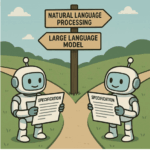GenAI is certainly changing the world. Every day there are new innovations in the use of highly trained models to do things that seemed impossible just a short while ago. As GenAI models take on more tasks that used to be the work of humans, there is always a nagging concern about accuracy and bias. Was the data used to train the model … Read More
Artificial Intelligence
A Principled AI Path to Spec-Driven Verification
I have seen a flood of verification announcements around directly reading product specs through LLM methods, and from there directly generating test plans and test suite content to drive verification. Conceptually automating this step makes a lot of sense. Carefully interpreting such specs even today is a largely manual task,… Read More
448G: Ready or not, here it comes!
The march toward higher-speed networking continues to be guided by the same core objectives as has always been : increase data rates, lower latency, improve reliability, reduce power consumption, and maintain or extend reach while controlling cost. For the next generation of high-speed interconnects, these requirements … Read More
PDF Solutions and the Value of Fearless Creativity
PDF Solutions has been around for over 30 years. The company began with a focus on chip manufacturing and yield. Since the beginning, PDF Solutions anticipated many shifts in the semiconductor industry and has expanded its impact with enhanced data analytics and AI. Today, the company’s impact is felt from design to manufacturing,… Read More
Gartner Top Strategic Technology Trends for 2025: Agentic AI
Agentic AI refers to goal-driven software entities—“digital coworkers”—that can plan, decide, and act on an organization’s behalf with minimal supervision. Unlike classic chatbots or coding assistants that respond only to prompts, agentic systems combine models (e.g., LLMs) with memory, planning, tools/APIs, sensing,… Read More
A Quick Tour Through Prompt Engineering as it Might Apply to Debug
The immediate appeal of large language models (LLMs) is that you can ask any question using natural language in the same way you would ask an expert, and it will provide an answer. Unfortunately, that answer may be useful only in simple cases. When posing a question we often implicitly assume significant context and skate over ambiguities.… Read More
Agentic AI and the EDA Revolution: Why Data Mobility, Security, and Availability Matter More Than Ever
The EDA (Electronic Design Automation) and semiconductor industries are experiencing a transformative shift—one that’s being powered by the rise of Agentic AI. If you attended this year’s SNUG, CDNLive, and/or DAC 2025, you couldn’t miss it: agentic AI was the hot topic, dominating keynotes, demos, and booth conversations… Read More
WEBINAR: What It Really Takes to Build a Future-Proof AI Architecture?
Keeping up with competitors in many computing applications today means incorporating AI capability. At the edge, where devices are smaller and consume less power, the option of using software-powered GPU architectures becomes unviable due to size, power consumption, and cooling constraints. Purpose-built AI inference … Read More
What is Vibe Coding and Should You Care?
This isn’t a deep article. I only want to help head off possible confusion over this term. I have recently seen “vibe coding” pop up in discussions around AI for code generation. The name is media-friendly giving it some stickiness in the larger non-technical world, always a concern when it comes to anything AI. The original intent… Read More
DAC TechTalk – A Siemens and NVIDIA Perspective on Unlocking the Power of AI in EDA
AI was everywhere at DAC. Presentations, panel discussions, research papers and poster sessions all had a strong dose of AI. At the DAC Pavillion on Monday two heavy weights in the industry, Siemens and NVIDIA took the stage to discuss AI for design, both present and future. What made this event stand out for me was the substantial… Read More











Quantum Computing Technologies and Challenges